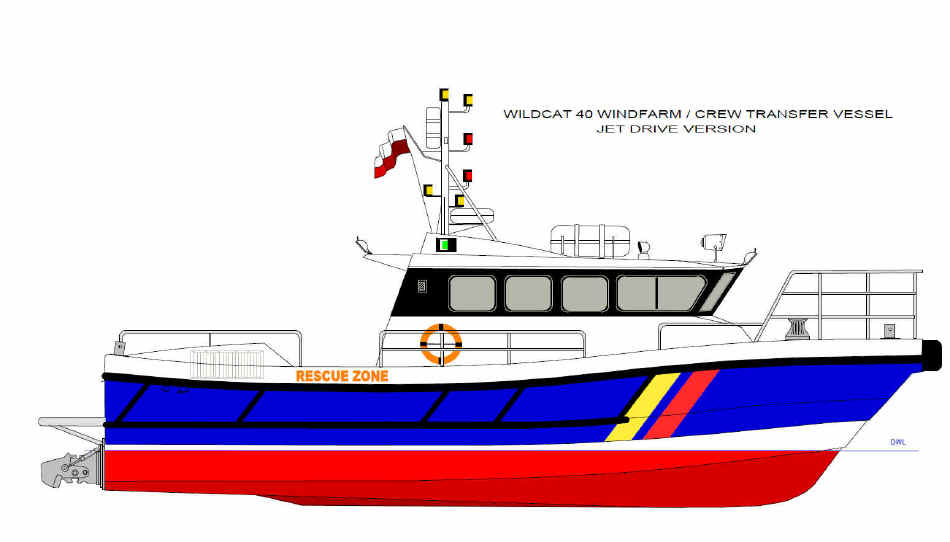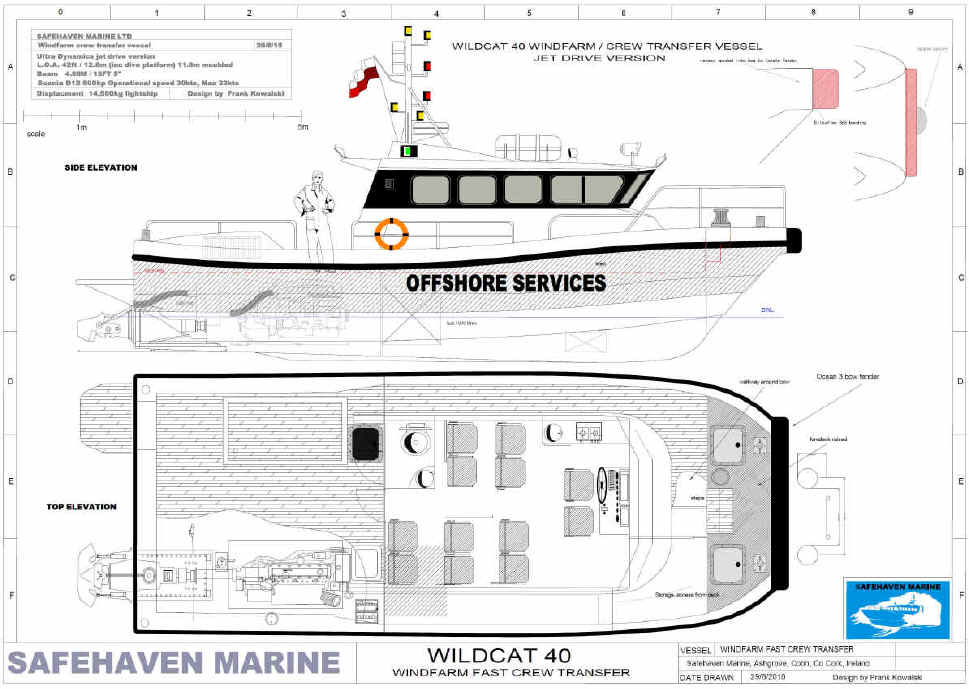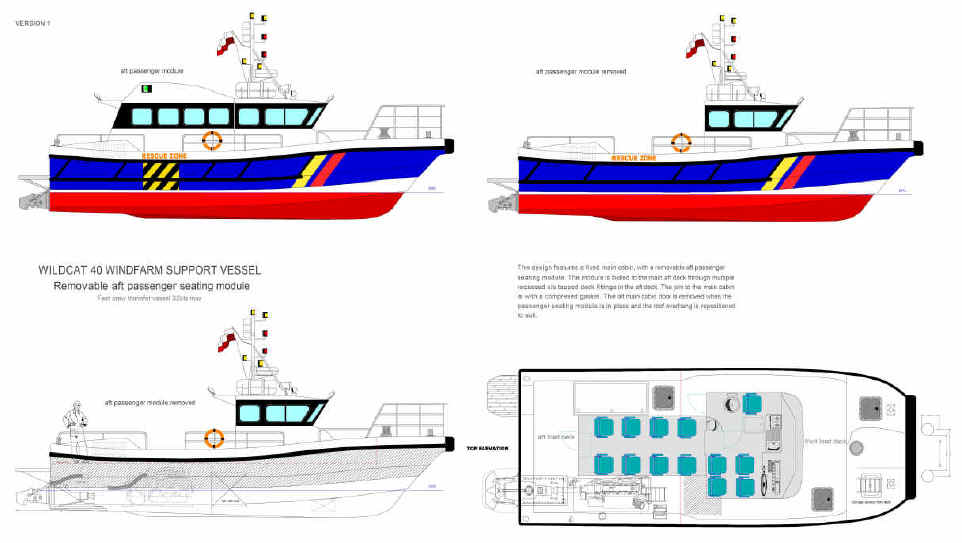|
WILDCAT 40 / 12m WINDFARM SUPPORT DESIGN
|
|||||
|
SPECIFICATION
L.O.A. Length Moulded BEAM Beam moulded Draft Displacment Lightship Seating capacity Fuel capacity Engines Power output Gearboxes Waterjets Generator Speed Operational Maximum Certification
WLDCAT 40, Ocean Ranger in force 8 and breaking seas
Rough weather video of La Reunion Wildcat in big waves
WLDCAT 40, Seaflower Rough weather trials, force 7-8 off Cork, Ireland
WLDCAT 40, MISBEHAVIN. Rough weather video, twin boat, force 7-8
WLDCAT 40, BLACK cat. Rough weather trials, force 7-8 off Cork, Ireland
|
40ft / 12m 11.8m 4.9m 4.8m 1.3m
12,000-14,000kg 12 pass / 3 crew 1000 litres Volvo /Cat/Yanmar 250 - 500hp Twin Disc 5126 Ulta Dynamics 9kw
16-25kts 30kts+ MCA Bureau Veritas |
WILDCAT 40 'WIND FARM / CREW TRANSFER' VERSION The Wildcat 40 Wind Farm version is an adaptation based on our proven and respected Wildcat 40 Cameraman hull. The bow of the vessel is modified dispensing with the cosmetically pleasing 'pickle fork' bow for a more practical square bow. This allows for the incorporation of the essential bow boarding area with an especially strengthened and fendered bow. The overall design is for a 10-12 passenger crew transfer design, featuring an island wheelhouse allowing crew to walk safely around the vessel and up to the bow behind secure bulkheads. An alternative configuration features a fixed main cabin with a removable aft passenger seating module. This allows the vessel to configured for a multitude of roles from Cargo carrying to passenger transfer. The aft passenger module can be quickly removed with a mobile crane and taken into storage on a flat bed trailer. On the standard fixed cabin version the vessel has a large, clear aft deck area for carrying light cargo, which can be loaded via a 2 ton HIAB crane. The vessel can be fitted with water jets for speeds of 30kts+ or conventional stern gear for a 25kts operational speed.
Standard fixed cabin version
Design features. The benefits of the
catamaran hull form are: Transverse static
stability, less rolling and motion Directional stability
in following sea conditions Lower vertical
accelerations smother motion in choppy head seas Lower power
requirements Greater economical
operational range Deck area Cabin space
Head sea abilities Due to the slender
nature of the hulls, in choppy conditions vertical accelerations are
much reduced in comparison with mono hulls giving a gentle ride and
motion. However previously
the biggest disadvantage of the older type of catamaran hull which
featured very fine sections fwd with little reserve buoyancy, giving a
very smooth ride in short sea states but suffering badly in ocean swell
conditions due to slamming on the bridge deck. This shortcoming has been
solved with much fuller fwd sections and much greater buoyancy, giving
the hull the necessary lift to prevent slamming on the bridge deck,
allowing higher speeds to be maintained into larger ocean swells. Performance Due to the low
resistance of the slender catamaran hulls, performance is excellent,
especially at moderate speeds up to 20kts. Typically, horse power
requirements are lower than in a similar sized mono hull. Furthermore
the flat running angles of the catamaran hulls, with no hump to overcome
means that there is a wide range of economical speeds, incurring no
penalty in fuel consumption at transition speeds often dictated by
weather conditions. Stability Probably the greatest
benefit of the catamaran hull form over the monohull is its transverse
static and dynamic stability. With GM figures typically 3-4 times
greater than a similar sized mono hull the operational envelope in rough
weather is extended. The Catamaran is able to provide a much more stable
work platform at rest than a monohull with greatly reduced rolling and
motion. In extreme conditions they are often the safest due to their
great transverse stability.
Safehaven Marine, Ashgrove, Cobh, Co Cork, Ireland Phone 00353 86 8054582 Email- info@safehavenmarine.com safehavenmarine@eircom.net
|
|||



